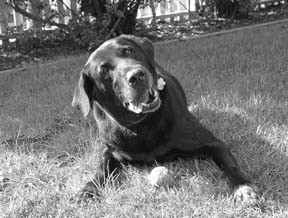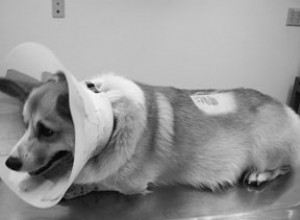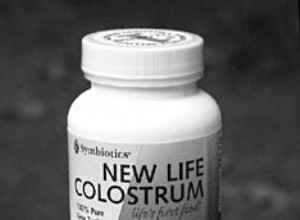작성자:Randy Kidd, DVM, PhD 강아지의 마음은 무엇인가요? 당신은 모를 수도 있지만 그의 뇌와 나머지 중추신경계(CNS)에 대해 최소한 조금이라도 아는 것이 도움이 될 수 있습니다. CNS는 척수, 뇌간, 소뇌 및 대뇌에 의해 형성된 뉴런 시스템을 설명합니다. 이번 달 투어 오브 더 도그(Tour of the Dog)는 CNS, 그 질병과 장애, 그리고 그 질병에 대한 치료법에 초점을 맞춥니다. 뇌 및 척수 신경(뇌간 또는 척수로 정보를 전달하는 특수 신경)으로 구성된 말초 신경계(PNS)는 이 문서의 범위를 벗어납니다. 거대해부학

CNS "장기 시스템"에는 신경 세포(뉴런)와 신경 세포의 기능과 건강을 지원하는 조직 및 세포가 포함됩니다. 뇌 자체는 두개골 뼈의 보호 "헤드기어"로 둘러싸인 보호된 금고 안에 있습니다. 뇌에서 뒤로 뻗어 있는 것이 뇌간이고, 이 줄기에서 계속 뻗어나가는 것이 척수입니다. 척수는 척추뼈의 보호 덮개 내부에서 골반 뼈 바로 너머까지 확장되어 운동 신경과 감각 신경을 사지와 장기 시스템에 제공합니다. 수막이라고 하는 결합 조직은 CNS 조직을 둘러싸는 보호 외막 역할을 합니다. 그것은 실제로 경질막, 거미막, 연막의 세 가지 층으로 이루어진 막의 집합체입니다. 바깥쪽의 경질막(말 그대로 거친 어머니)은 질긴 섬유질의 바깥쪽 덮개입니다. 경막 내부에는 거미막이라고 하는 얇은 수막이 있으며 거미줄 같은 구조(따라서 거미막이라는 용어)는 경막을 연막과 결합합니다. 연막은 뇌 표면에 밀접하게 부착되어 있는 얇고 혈관이 많은 막입니다. 참고:움직이는 동물을 고려할 때 수막이 뇌 주위에 형성되는 섬유질 캡슐에서 척수의 길이를 따라 뒤로 확장된다는 점을 이해하는 것이 중요합니다. 따라서 수막은 굴곡, 수축, 회전하는 척추를 탄력적으로 지지하는 탄력 있는 막을 제공합니다. 또한 연속적이기 때문에 척추뼈가 "고착"될 때마다 해당 "뭉침"이 척추를 따라 다른 지점에 반영됩니다. 이것은 예를 들어 요추 부위에 필요한 카이로프랙틱 교정이 척추를 따라 다른 곳, 예를 들어 목 부위에 추가적인 조절이 필요할 수도 있음을 의미합니다. 뇌의 안쪽 부분에 있는 큰 심실에서 생성된 뇌척수액(CSF)은 지주막하 공간을 순환합니다. CSF는 혈액에서 대사 산물을 운반하고 뇌 대사의 부산물을 제거하여 뉴런과 신경교에 대한 일정한 환경을 유지하는 데 도움이 됩니다. 또한 뇌를 신체의 면역 체계의 나머지 부분에 연결하는 데 도움이 되며 뇌가 뜰 수 있는 유체 쿠션을 생성합니다. CSF 유체 샘플을 수집하여 진단 보조 수단으로 검사할 수 있습니다. 뇌의 주요 부분을 자르면 대부분의 내부가 흰색이고 얇은 외부 층인 대뇌 피질이 장갑처럼 백질 위에 꼭 맞는다는 것을 알 수 있습니다. 대뇌 피질(피질은 라틴어로 "나무 껍질"을 의미함)이 광범위하게 접혀 있어 평평한 표면에서 사용할 수 있는 것보다 훨씬 더 많은 표면적을 허용합니다. 이 증가된 표면적은 더 많은 세포를 위한 공간을 만듭니다. 이론적으로 피질이 더 강하게 접힐수록 동물은 더 똑똑해집니다. 뇌는 물리적으로 좌반구와 우반구로 나뉘며, 반구는 기저부에서 해마라는 뿔 모양의 구조로 연결되어 있습니다. 수년 동안 좌뇌(논리적, 선형적, 집중적 사고의 뇌)와 우뇌(감정적, 글로벌적 사고)의 기능은 완전히 분리되어 있으며 각 반구는 지정된 기능에 대해 전적으로 책임이 있다고 생각했습니다. 그러나 오늘날의 연구는 원래 생각했던 것보다 반구 사이에 더 많은 연결과 교차가 있음을 나타냅니다. 따라서 인간이 선형적이고 논리적인 사고를 할 때에도 감정적 뇌는 항상 동조되어 있습니다. 즉, 가장 논리적인 사고조차도 적어도 어느 정도는 감정적 방식으로 처리되고 있습니다. 이것이 사실임을 깨닫고, 최근의 뇌 과학은 심신 연결에 대한 확장된 인식으로 이어졌습니다. 뇌의 고고학 뇌는 뇌의 특정 해부학적 부분(따라서 특정 기능적 능력)이 다른 동물보다 일부 동물에서 더 많이 발달하면서 영겁에 걸쳐 진화했습니다. 뇌간은 뇌에서 가장 오래된 부분입니다. 5억년 이상 전에 진화한 것으로 파충류의 뇌 전체를 닮았다고 해서 흔히 파충류의 뇌라고 불린다. 일반적인 경보 수준을 결정하고 중요한 들어오는 정보를 유기체에 경고하며, 예를 들어 생존, 호흡 및 심박수에 필요한 기본 신체 기능을 처리합니다. 소뇌는 뇌간의 뒤쪽에 붙어 있습니다. 다른 기능 중에서 소뇌는 자세를 유지 및 조정하고 근육 운동을 조정합니다. 간단한 학습 응답에 대한 메모리도 여기에 저장할 수 있습니다. 변연계는 뇌간과 피질 사이에 위치한 세포 구조의 그룹입니다. 시스템의 두 가지 핵심 부분은 시상하부와 뇌하수체입니다. 작은 완두콩 크기에 불과하지만 시상하부는 먹고, 마시고, 자고, 깨어나고, 체온을 유지하고, 균형을 잡는 등 많은 기능을 조절합니다. 그것은 또한 많은 사람들이 신체의 "마스터 샘"으로 간주하는 뇌하수체를 지시합니다. 변연계는 2억년에서 3억년 전 사이에 진화했습니다. 포유류에서 가장 발달되어 있기 때문에 종종 포유류의 뇌라고 불립니다. 다른 기능 외에도 변연계는 생존과 관련된 감정적 반응에 관여합니다. 대뇌는 개의(그리고 다른 포유류) 뇌의 가장 큰 부분입니다. 그것은 두 개의 반구 또는 반구로 나뉘며 각 반구는 신체의 반대쪽 절반을 제어합니다. 반구는 뇌량(corpus callosum)이라고 하는 신경 섬유 띠로 연결되어 있습니다. 뇌량(corpus callosum)은 뇌에서 가장 큰 섬유 경로로, 수억 개의 신경 섬유로 이루어진 "다리"입니다. 각 반구를 덮고 있는 것은 대뇌 피질이라고 하는 복잡하게 접힌 신경 세포의 얇은 층입니다. 피질은 우리와 반려견이 기억하고, 소통하고, 이해하고, 창조할 수 있는 뇌의 영역입니다. 대뇌 피질은 약 2억 년 전에 포유류에 처음 나타났습니다. 그것은 다른 어떤 동물보다 인간 종에서 더 고도로 발달된 뇌의 부분입니다. 대뇌 피질은 각각 고유한 기능을 가진 여러 엽으로 더 나뉩니다. (뇌의 "매핑"은 진행 중인 과정이며, 대부분의 작업은 특정 활동 또는 생각은 실험 대상에 의해 수행됩니다.) 전두엽은 주로 의사 결정과 의도적 행동에 관여합니다. 전두엽 바로 뒤에 위치한 두정엽은 신체와 그 활동을 나타냅니다. 측두엽은 두정엽과 전두엽의 일부 아래에 있습니다. 일부 기능에는 청각, 지각 및 기억 처리가 포함됩니다. 후두엽은 두정엽의 뒤와 아래 그리고 소뇌 바로 위에 있습니다. 그 기능은 시력과 관련이 있습니다. 다양한 뇌 부분의 기능 중 적어도 일부를 이해하는 것의 중요성은 병변이 발생하는 경우 병변의 위치를 파악하는 것이 더 쉽다는 것입니다. 중추신경계의 미세해부학 뉴런은 신경 자극을 전달하는 세포입니다. 그들은 감각 입력(통증, 쾌감, 후각, 청각, 시각 등)을 전달하는 역할을 합니다. 고유수용감각(신체 부위가 언제 어디에 있는지 알고 있음); 그리고 근육에 충동을 전달하여 근육이 행동하도록 자극합니다. 그러나 중추신경계 세포의 약 90%는 아교세포(글루를 의미)라고 합니다. 여러 유형의 신경교 세포가 있으며 각각 고유한 기능을 가지고 있습니다. 성상교세포와 미세아교세포는 뉴런에 물리적, 영양적 지원을 제공합니다. 희소돌기아교세포와 슈반세포는 뉴런에 절연을 제공합니다. 위성 세포는 뉴런에 대한 물리적 지원을 제공합니다. 신체의 나머지 부분과 마찬가지로 뇌는 활성화되면 생명에 필수적인 다양한 반응을 생성하는 생화학 물질 수프에 몸을 담그고 있습니다. 뉴런은 신체의 한 영역에서 다른 영역으로 전기 자극을 이동시켜 기능하며, 신경 연결(시냅스)을 가로지르는 이러한 이동을 담당하는 화학 물질을 신경 전달 물질이라고 합니다. 이 범주에는 에피네프린, 노르에피네프린, 세로토닌, 히스타민 및 글루타메이트가 포함됩니다. 이들 각각은 생산을 위해 특정 아미노산이 필요한 단백질입니다. 각각은 고유한 기능을 가지고 있으며 많은 경우 기능이 발생하는 특정 표적 기관이 있습니다. 최근의 증거는 신경 전달 물질의 건강이 균형 잡힌 영양 섭취, 운동, 마사지와 같은 손과 털의 접촉, 사랑이 가득한 가정에서의 생활 등 여러 가지 방법으로 향상될 수 있음을 보여줍니다. 신경학적 검사 신경계 질환의 가능성에 대한 지표에는 행동 변화, 발작, 떨림, 비틀거림 또는 하나 이상의 사지의 마비 또는 마비가 포함됩니다. 완전한 신경학적 검사는 광범위한(그리고 비용이 많이 드는) 과정이 될 수 있으며, 결국 진단은 종종 단순한 연역적 추론에 의존하여 더 많은 가능성 있는 원인의 더 작은 목록으로 가능성의 큰 목록을 좁힙니다. 발병 시간, 경과 및 불만 기간에 대한 정보가 도움이 될 수 있습니다. 선천성 및 가족성 장애는 출생 시 또는 생후 몇 년 이내에 순종 동물에서 가장 흔합니다. 염증성, 대사성, 독성 및 영양 장애는 모든 종, 품종 또는 연령에서 발생할 수 있습니다. 발병이 빠른 경향이 있으며 일반적으로 진행성입니다. 외상 및 혈관 손상은 급성으로 발병하며 처음 24시간 후에는 거의 악화되지 않습니다. 대부분의 퇴행성 및 종양성 장애는 노령견에서 발생합니다. 느리고 점진적으로 발병하는 경향이 있으며 시간이 지남에 따라 증상이 악화되는 경우가 많습니다. 완전한 신체는 신경 관련 상태를 나타낼 수 있습니다. 예를 들어, 일반화된 세균 감염은 뇌, 수막 또는 척수로 확장될 수 있습니다. 종양은 한 기관계에서 시작되어 신경 조직으로 전이될 수 있습니다. 만성 염증성 질환은 신경 조직을 포함한 장기 시스템에 존재할 수 있습니다. 신경에 영향을 미치는 대사 문제는 일반적으로 다른 장기 시스템에도 영향을 미칩니다. 신경학적 검사에는 머리, 목, 흉부 및 흉부 사지, 요추 및 골반 부위, 골반 사지, 항문 및 요도 괄약근, 꼬리 및 동물의 보행에 대한 검사가 포함되어야 합니다. 종종 수의 카이로프랙틱 의사는 이러한 영역을 철저히 평가할 수 있으며 평가가 진행되는 동안 정상 가동 범위로 "고착"된 느낌의 관절을 조정할 수 있습니다. 신경학적 결핍이 국소화되면 척추(또는 사지)를 따라 병변 부위가 분명해질 수 있습니다. 예를 들어, 앞다리 기능 장애는 첫 번째 경추에서 처음 두 개의 흉추 중 하나에 이르는 척추를 따라 발생하는 병변으로 인해 발생할 수 있습니다. 또는 발과 발가락을 포함하여 사지의 길이를 따라 어딘가에 병변이 있을 수 있습니다. 개의 자세와 걸음걸이(걷기, 걷기, 돌기, 뒤돌기 등)를 평가하는 것 외에도 신경계의 고립된 부분을 평가하기 위해 고안된 많은 특정 신경학적 검사가 있습니다. 추가 테스트도 도움이 될 수 있습니다. 임상 병리학은 일반화된 감염, 간 또는 신장 기능 장애, 또는 신경 조직에도 영향을 미치는 호르몬 또는 대사 상태를 나타낼 수 있습니다. 혈액 검사 결과는 문제를 일으킨 특정 독소의 존재를 나타낼 수 있습니다. 예를 들어, 특히 낮은 수준의 혈청 콜린에스테라제는 급성 유기인산염(벼룩 방지 및 진드기 방지 제품의 일반적인 성분) 독성을 나타냅니다. 뇌척수액 평가는 특히 감염이나 염증에 도움이 될 수 있습니다. 방사선 사진은 골절과 일부 종양을 감지하는 데 사용할 수 있습니다. 컴퓨터 단층촬영(CT) 또는 자기공명영상(MRI)을 사용하여 작은 병변을 감지할 수 있습니다. 뇌파도(EEG)는 대뇌피질의 전기적 활동을 기록하며 뇌수종, 수막뇌염, 두부 외상 및 대뇌종양을 감지하는 데 좋은 도움이 됩니다. 흥미롭게도 EEG는 더 일반적인 형태의 간질을 진단하는 데 특히 능숙하지 않습니다. 뇌의 질병 다양한 세포 유형과 다양한 기능을 가진 장기 시스템을 다룰 때 예상할 수 있듯이 CNS의 질병과 질병의 원인은 다양하므로 진단이 매우 어렵습니다. CNS의 거의 모든 부분은 선천성 또는 가족성, 영양성, 대사성, 감염성 또는 염증성, 독성, 외상성, 혈관성, 기생충성, 종양성, 면역학적, 퇴행성… 의료 종사자) 또는 특발성(원인을 알 수 없음). 신경계의 잠재적인 질병에 대한 진단적 접근은 다차원적 접근을 수반합니다. 종종 정확한 진단은 여러 요인을 하나의 최종 그림으로 연결하는 데 달려 있습니다.

A clinical evaluation will assess the totality of clinical symptoms. Are the symptoms diffuse or focal; symmetric or asymmetric; painful or nonpainful; progressive, regressive, or static; mild, moderate, or severe? An anatomic location of the lesion may be evident from the prevailing signs. Potential mechanisms of the disease are considered (from the entire list above), and hopefully a short list of the most likely possibilities can be generated. Congenital disorders are most common in purebred animals at birth or shortly thereafter. Some familial disorders cause a progressive degeneration of neurons in the first year of life, while others (such as inherited epilepsy) may not manifest for several years. Trauma is a major cause of neurologic dysfunction due to physical damage, hemorrhage, edema, and progressive formation of oxygen-containing free radicals. Traumatic conditions have a rapid onset of symptoms, and the damage is generally complete within 24 to 48 hours. In other words, clinical signs will usually not get worse than they are one or two days after the traumatic event; whether the signs gradually improve depends on the extent of the original damage and the success of the treatment given. Infections (meningitis – infection of the meninges, and encephalitis – infection of the brain) can be caused by any of many agents including bacteria, viruses, fungi, protozoa, prions (a minute particle of a virus), and algae. Rabies and canine distemper are two examples of viral diseases that have a serious nervous system component. The most common neurological toxicities in dogs are caused by insecticides (such as those found in many flea and tick products), but the list of neurotoxins in the environment is almost endless. Metabolic alterations that result in nervous signs include hypoglycemia, hepatic dysfunction, uremia (kidney failure), and alterations in mineral metabolism. Both hypo- and hyperthyroidism can cause neurological signs, as can hypoadrenocorticism (Addison’s disease) or hyperadrenocorticism (Cushing’s disease). Vitamin deficiencies can cause ataxia, stupor, coma, and/or seizures. Vascular lesions are usually due to septicemia or bacterial embolism within the CNS. Unlike their human counterparts where cerebrovascular disease from arteriosclerosis (thickening and loss of elasticity of the arterial walls) and hypertension (high blood pressure) are fairly common, these two are rare diseases in dogs. Nervous system neoplasias (tumors) are reported more often in dogs than in other domesticated species. Overall frequency of tumors reported varies considerably, depending on the survey – from almost 3 percent of all dogs examined at necropsy to less than 0.02 percent of the examined dogs. One survey found that the most common sites for neoplasia in young dogs were located in the hematopoietic (blood forming) system, the brain, and the skin. Brachy-cephalic breeds – such as Boxers, English Bulldogs, and Boston Terriers – are at increased risk for developing certain tumors of the brain tissues. Each and every one of the many cell types present in the CNS can be altered to grow into its own tumor types – for example astrocytes, oligodendrocytes, and glial cells, respectively producing astrocytomas, oligodendrogliomas, and gliomas. Furthermore, each tumor type has its own propensity for growth or its ability to spread and become malignant. It is therefore an extreme challenge to accurately diagnose nerve tissue tumors and to offer a prognosis for how they will perform in the future. Holistic approach Given the difficulty of accurately diagnosing and adequately treating a disease of the nervous system, it is important that we think in terms of prevention of CNS disorders rather than cure. And while the CNS is all-inclusive in terms of its impact on the whole body, there are some general ways to help your dog maintain a healthy CNS. • At the top of the list is exercise. In the case of the CNS, we are referring to whole body/mind/spirit and heart exercise. Daily, moderate exercise will bathe all the body’s nerves with health-sustaining nutrients, and activity helps to keep all systems in balance. But the nervous system also needs to have its thinking, reasoning, creativity “worked” on a daily basis. Dogs (and people) who are exposed to novel experiences and whose day-to-day activities require creative reasoning are able to maintain healthier brains well into old age. Take your dog for a walk, meet new people and other animals, continue basic training and add “tricks” that stimulate the brain – all good prescriptions for a healthy brain. • Nutrition. While good nutrition is absolutely essential for a healthy nervous system, sometimes I think we make it too difficult. The basic keys to nutrition are easy:a balanced diet of good, high quality ingredients; absence of potentially toxic substances; species-appropriate foods (grass and grain for horses; meats with some veggies for dogs); and moderation. The older I get, the more I believe that a really balanced diet (lots of choices during the week’s meals) may be most important. You cannot beat fresh, organic, unprocessed, unpreserved foods for a truly top-quality diet. • Supplements. Use supplements if you have a compelling reason to do so; in some cases they can be helpful. But keep in mind that evidence is mounting that supplements given in the form of pills or capsules are not nearly as effective as their counterparts found in natural foods. And, out-of-balance supplements or those given in excess may be more problematic than helpful. Examples of nerve-enhancing supplements include antioxidants such as vitamins A, C, and E; a balanced vitamin B supplement; and magnesium (given in a format that balances it with other minerals). Gingko (Ginkgo biloba) improves nerve function, possibly due to its ability to enhance oxygen flow to the brain. Other herbs such as hawthorn berries (Crataegus species) enhance blood flow, and most herbs contain high levels of antioxidants. • Socialization. In today’s crowded world, dogs absolutely need to be socialized. Any dog that hasn’t learned to stay out of the street (or that isn’t being walked on a leash), or that has not learned how to approach other dogs without inciting a fight, is a trauma case waiting to happen. • Chiropractic. There is nothing better for health and healing, especially for the nerves that come from the spinal cord and supply peripheral body parts, than periodic chiropractic adjustments. A “well-oiled” spine is an essential component for overall health, allowing for a full range of pain-free movement and creating a flow of healthy nervous input to dependent muscles and organs. Conversely, “stuck” joints often create irritated nerves, which then adversely affect the organs and muscles they supply. • Homeopathy and acupuncture are two powerful medicines that may be helpful for treating many nervous system diseases. Many practitioners have had good success treating epilepsy with acupuncture, and particular homeopathic remedies seem to fit some of the symptoms of a variety of nervous system diseases. The protocol for using either of these medicines will vary with the disease symptoms, as they are presented. Don’t be surprised if the way of diagnosing and the approach to providing alternative therapies differ from the way conventional Western medicine typically approaches disease and healing. • Tincture of time. It was once thought that nerve cells did not regenerate and that animals did not generate new nerve cells, but recent evidence clearly shows this to be wrong. Damaged nerve cells can regenerate, and nerve cells continue to develop as long as we stimulate the need for them (i.e., as long as we stimulate the brain to think and act). Often, especially after a traumatic event, all that is needed for healing is to be patient and wait for it to happen. • Heart to head connection. Consider your dog’s emotional health as an integral part of her/his nervous system. A little loving contact goes a long toward creating and maintaining a healthy CNS. The recent advances into the science of the brain indicate that it may truly be the body’s inner health maintenance organization. When the brain is emotionally relaxed, satisfied, and happy, it sends the message to all other body parts that everything is under control, that homeostasis has been achieved. On the other hand, however, putting the animal under emotional stress alters the biochemical messages being generated by the brain, and the result is that all other body parts are also stressed. 이 문서와 함께 “What You Can Do”-Dr. Randy Kidd는 Ohio State University에서 DVM 학위를, Kansas State University에서 병리학/임상 병리학 박사 학위를 받았습니다. American Holistic Veterinary Medical Association의 전 회장이자 Dr. Kidd's Guide to Herbal Dog Care 및 Dr. Kidd's Guide to Herbal Cat Care의 저자입니다.

Randy Kidd, DVM, PhD 고통은 인간이나 짐승의 모든 질병 증상 중에서 가장 불가사의한 것일 수 있습니다. 그것은 우리 모두가 한 번쯤 그리고 다양한 정도로 경험한 감각입니다. 그러나 우리 중 특정 통증이 어떻게 느끼는지 적절하게 설명할 수 있는 사람은 거의 없으며 통증이 발생하는 이유에 대해 합리적인 설명을 할 수 있는 사람은 여전히 적습니다. 고통을 겪었던 최근의 모든 과학적 연구에도 불구하고, 우리는 여전히 그것이 어떻게 발생하는지에 대한 최소한의 이해를 가지고 있습니다. 이제 이 모든 것을 우리에게 말을 할

소의 첫 우유가 개의 건강을 개선하는 것과 어떤 관련이 있습니까? 일화와 과학적 증거에 따르면, 당신이 상상하는 것보다 훨씬 더 많습니다. 포유류가 출생 후 처음 며칠 동안 수유 중에 생산하는 단백질이 풍부한 노란색 액체인 초유는 대자연의 첫 번째 슈퍼푸드입니다. 영양가가 높을 뿐만 아니라 면역 및 성장 인자, 효소, 단백질 및 기타 많은 유익한 물질을 함유하고 있습니다. 연구에 따르면 신생아만이 초유의 도움을 받는 것은 아닙니다. 소 초유는 종에 따라 다르므로 개(및 기타 포유류)도 이로부터 혜택을 받을 수 있습니다. 알레